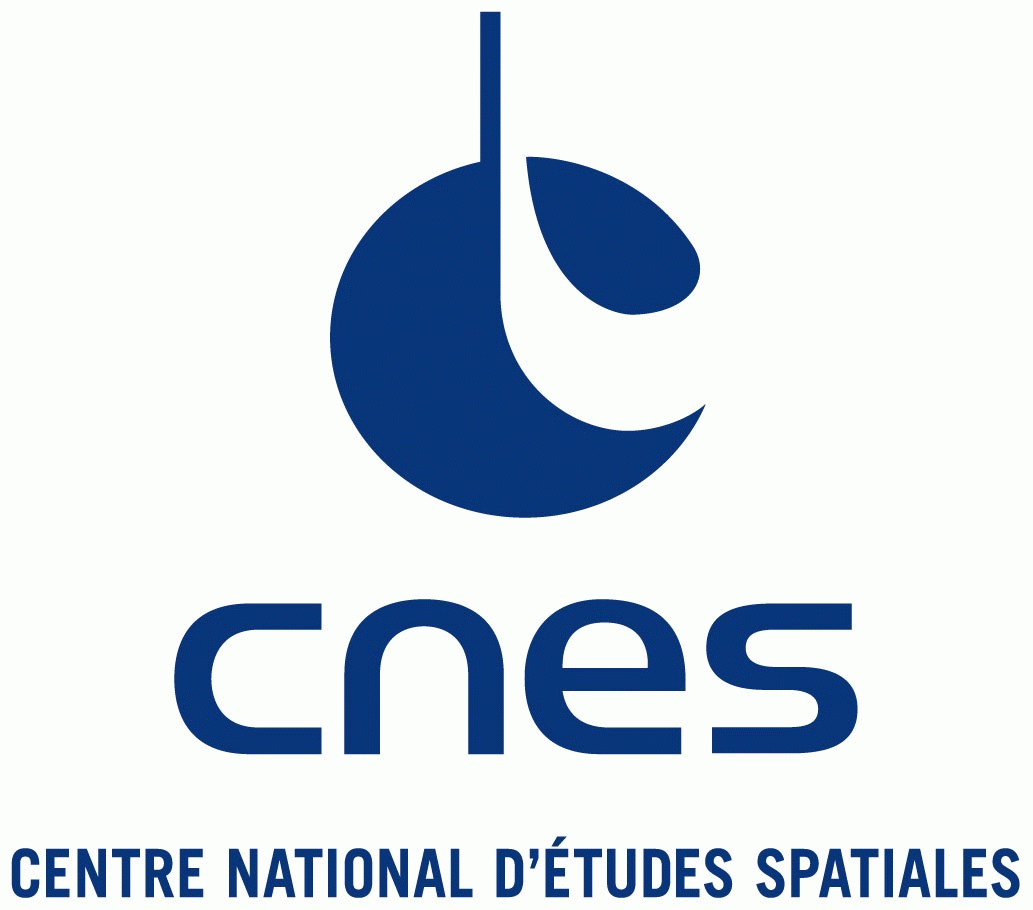|
|
SMALL PRESSURIZED
BALLOON (SPB)
|
|
Following
the EOLE experiment which launched with success 480 pressurized
balloons at pressure level equal to 200hPa, D.
Cadet et H. Ovarlez from the Laboratoire de Météorologie
Dynamique (LMD) begun in 1972 to study the use of small pressurized
balloons (SPB) to probe the atmospheric boundary layer.
Two
preliminary experiments
-
22 balloons from
Rangiroa island in the South Pacific in 1973,
-
10 balloons from
Ascencion island in the South Atlantic in 1974
allowed
to put forward difficulties of such flights (Cadet & al. 1975, J.
Appl. Met, 14, pp. 1478-1484). These difficulties come from vertical
oscillations due to, on the one hand, cooling and radiative heating of
envelope, and the other hand, tropical rain effects which can down the
balloon close to the sea surface. For balloon with 2m diameter, they
estimate the water loading by rain equal to 500g and an additional
dynamic pressure around 1000g. The balloon structure coming from the
one of EOLE, with the payload under the balloon, didn't allow to stand
up to these events since instrumentation is destructed when the balloon
hits or gets close to the sea surface (Rangiroa experiment). That is
why scientific instrumentation has been located inside the envelope to
protect payload from salty water.
This
solution has been tested during flights from Ascencion island then used
during other experiments such as :
-
Summer monsoon (45
balloons launched from Seychelles in 1975 ; D. Cadet et H.
Ovarlez,
Quart. J. R. Met Soc, 1976, 102, pp 805-815),
-
BALSAMINE (60 balloons
from Seychelles et 28 balloons from Diego-Suarez in 1979 ; D.
Cadet & al., Bull. Am. Meteor. Soc, 1981, 62, pp. 381-388),
-
INDOEX (17 balloons
launched from Goa in 1999 ; Ethe et al., J. of Geophys. Res.,
107D19, 2002, INX2-22-1:19)
-
BOA (8 balloons
launched from Ushuaia in 2000 ; Ethe, PhD thesis, Paris 2001).
-
VASCO
2005 (5 balloons from Seychelles; http://www.lmd.ens.fr/tromeur/VASCO)
-
VASCO
2006 (4 balloons from Seychelles; http://www.lmd.ens.fr/tromeur/VASCO)
These pressurized
balloons have been fully developed and made at LMD until BOA
experiment. Now, balloons are developed by the CNES, balloon envelopes
being made by ZODIAC
INTERNATIONAL.
|
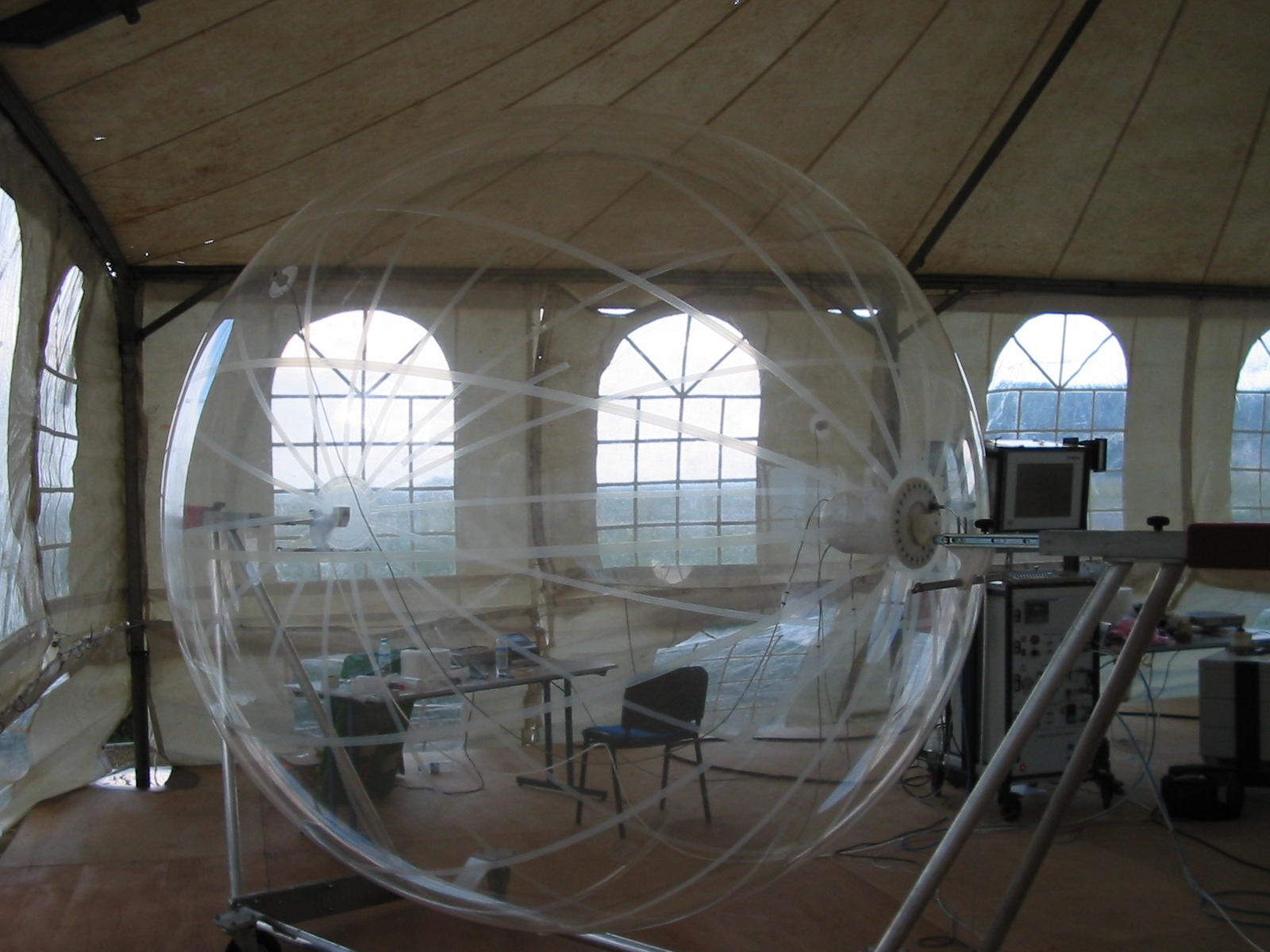 |
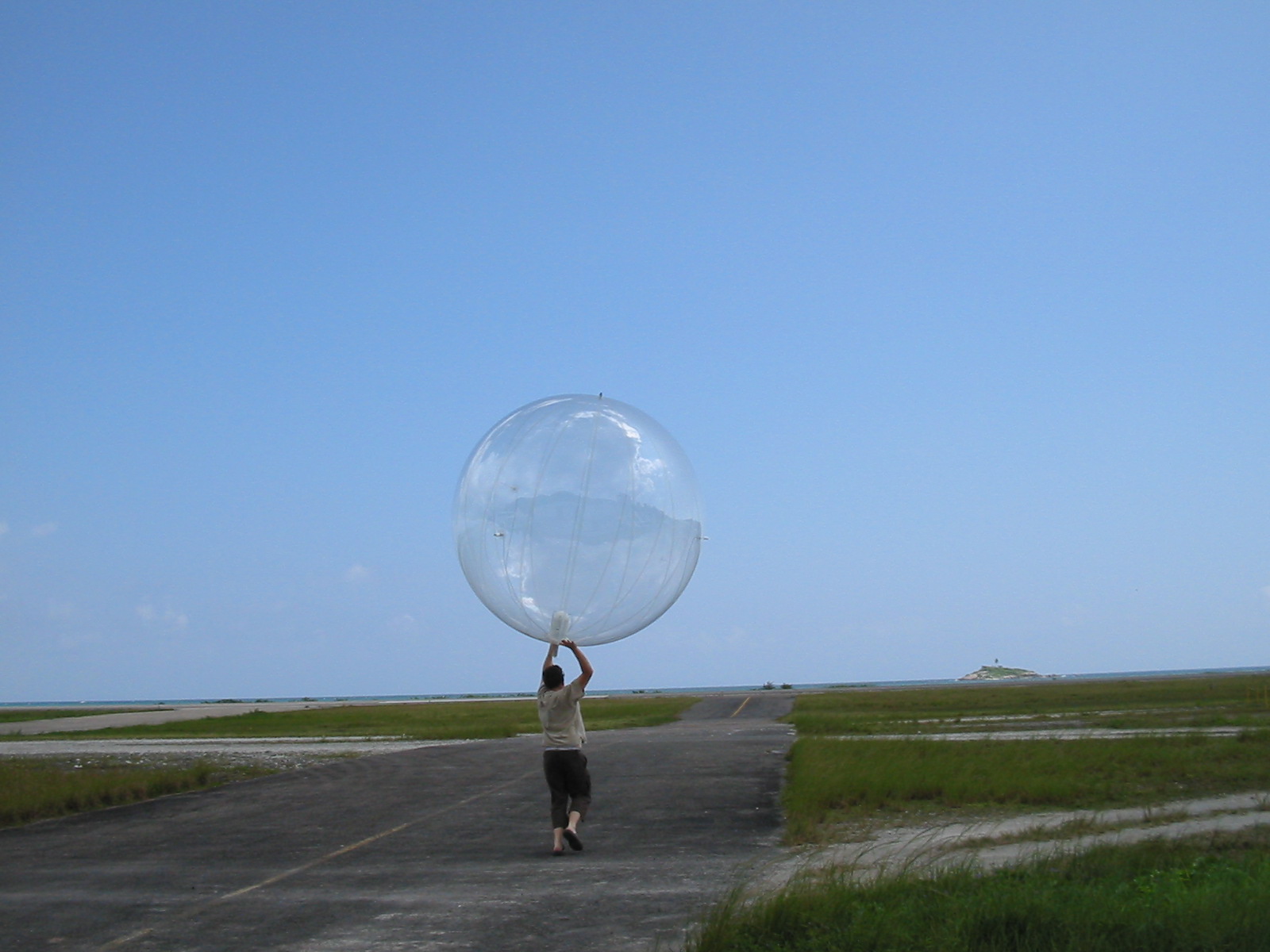
|
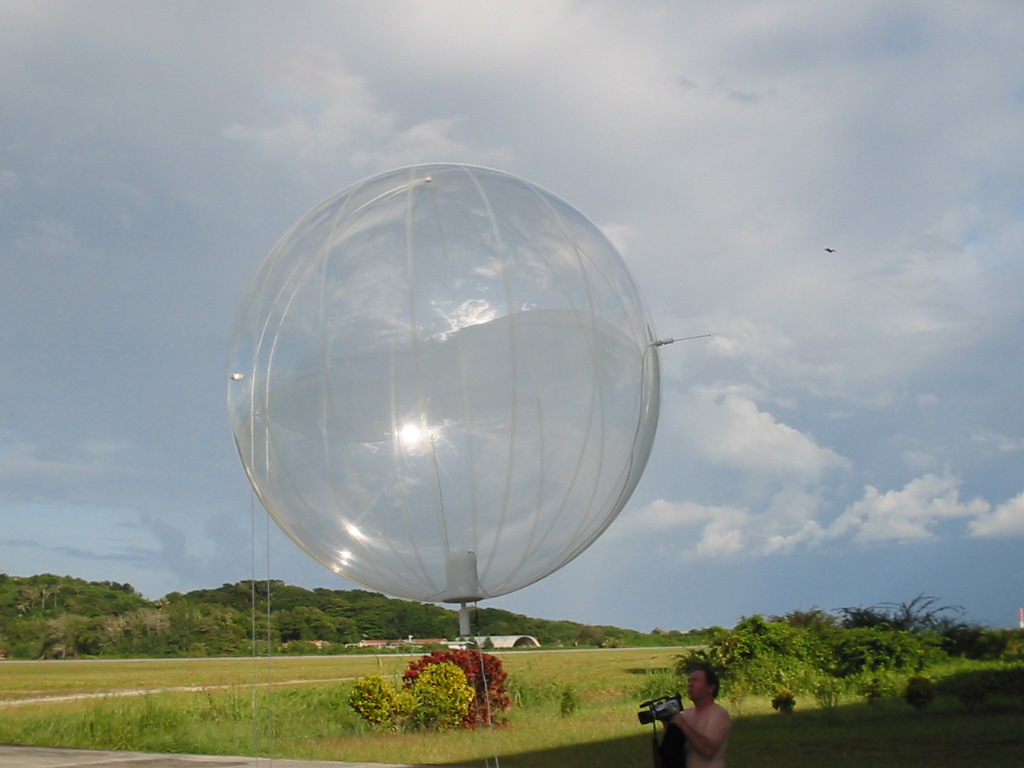
|
Superpressure
balloons keep a nearly constant volume and therefore fly at a
quasi-constant density level, acting as Lagrangian tracers of air
parcels and meteorological platforms. Produced by ZODIAC under CNES
supervision, balloons are inflated with helium with a nominal 120hPa
overpressure at flight level. The envelope, made of three-laminated
polyester of 125 micrometers, has a 2.5m diameter spherical shape. With
a total mass of approximately 9kg, this vehicle can fly in layers
between the surface and approximately 830hPa depending of its ballast.
As long as a sufficient overpressure is maintained the volume remains
constant, except for slight thermal fluctuations producing low
amplitude buoyancy oscillations mostly driven by the diurnal cycle.
These balloons proved to be good tracers of horizontal motion close to
their equilibrium density level. However, they may react to wind bursts
by small amplitude, high frequency, vertical oscillations around this
equilibrium level. The most serious problem they encounter is water
loading by rain or condensation when the envelope temperature drops
under the dew point temperature. This latter case may happen when the
balloon enters nearly saturated air or whenever the helium gets cooled
by nocturnal radiation.
|
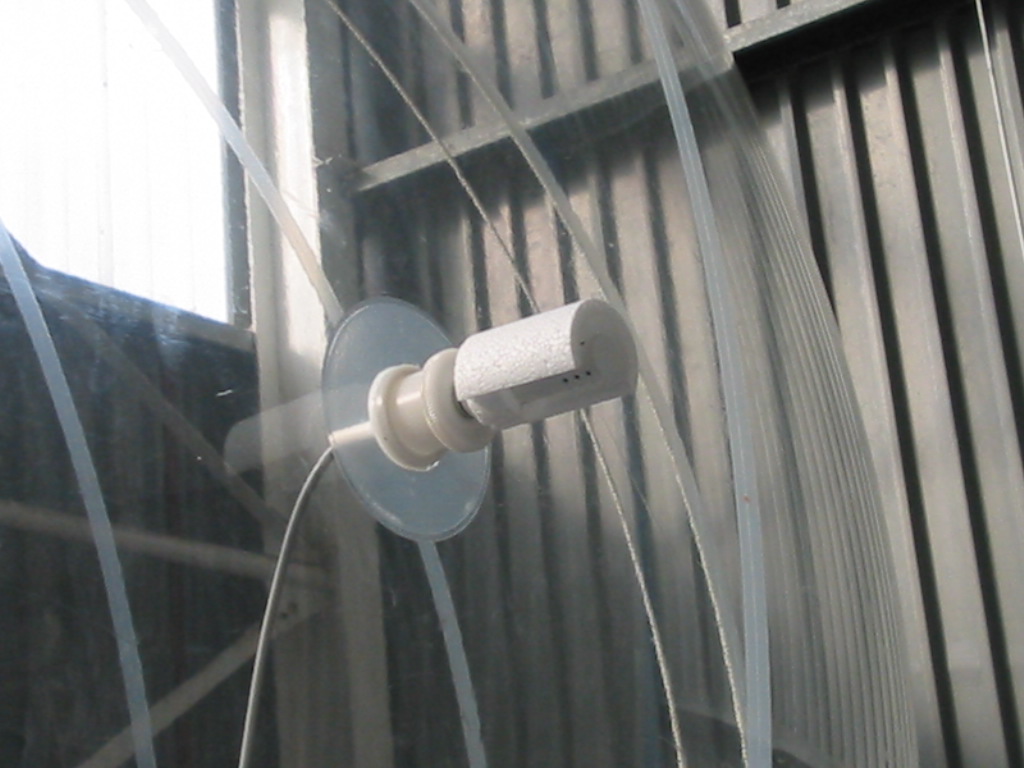
|
Scientific
instrumentation on board SPB's consists in air pressure, temperature
(Figure at the bottom on the left-hand side) and humidity (Figure at
the top on the left hand side) sensors, and a 3D location GPS receiver.
Helium temperature and pressure are also recorded. Data are
broadcasted, with a mean 15 minutes period, through the ARGOS
system. Power is provided by lithium batteries that ensure around a one
month lifetime. Batteries, electronics, ARGOS and GPS antenna are all
located inside the envelope (Figures on the right-hand side), protected
from salty water when the balloon hits or gets close to the sea surface.
|
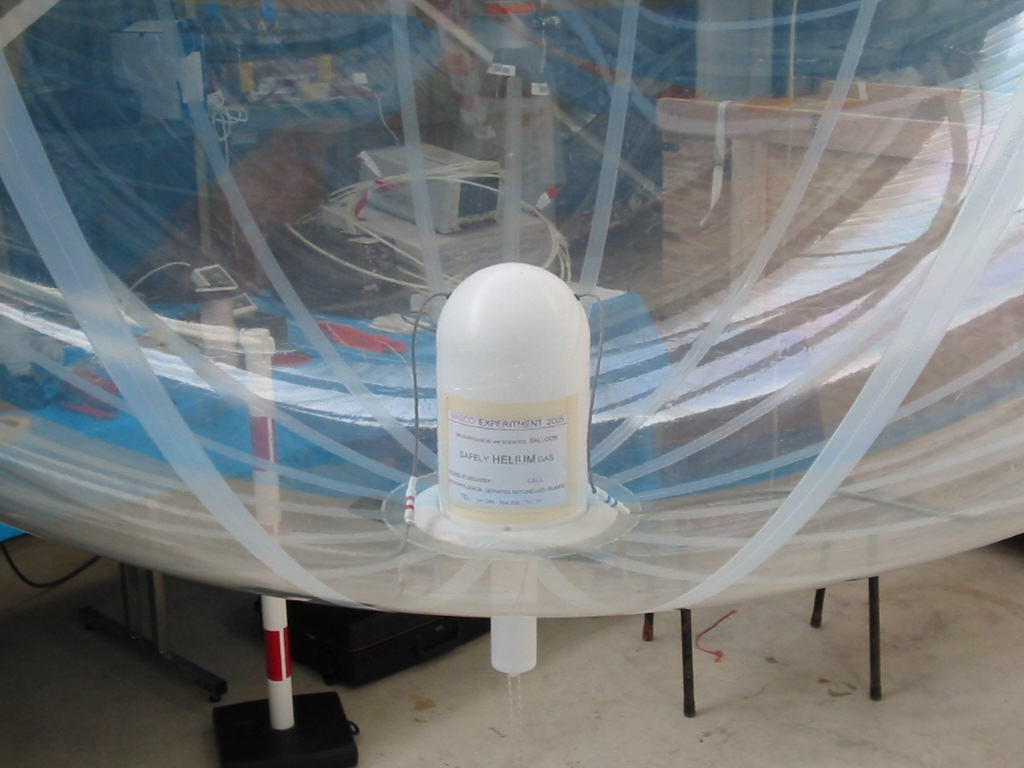 |
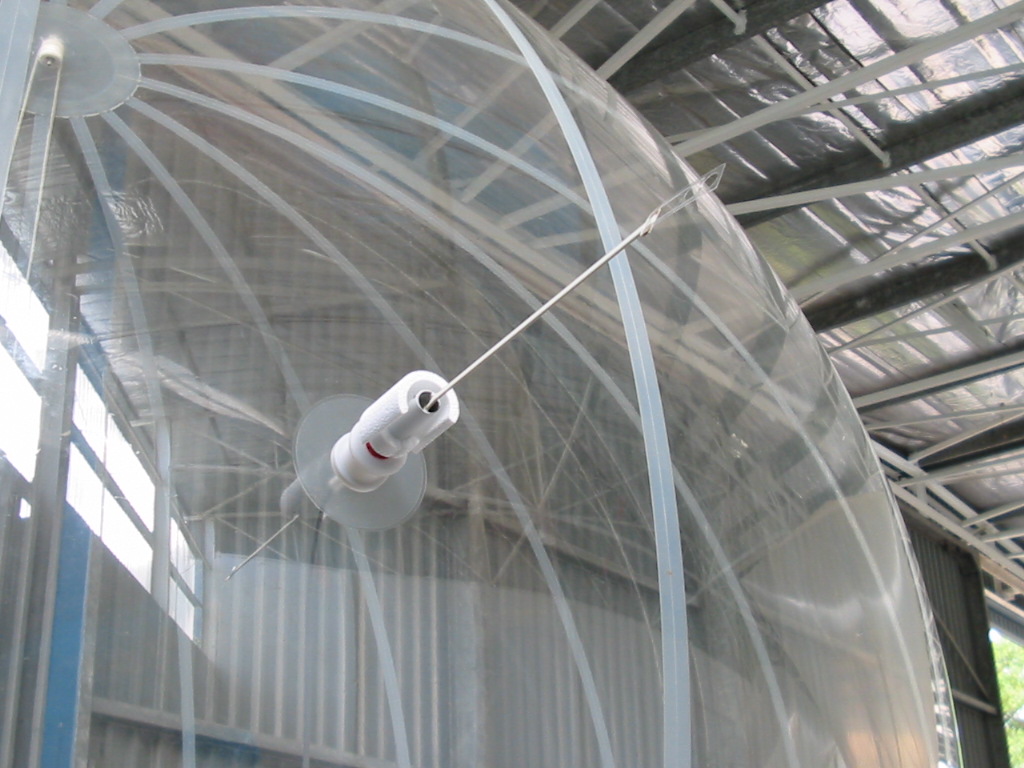
|
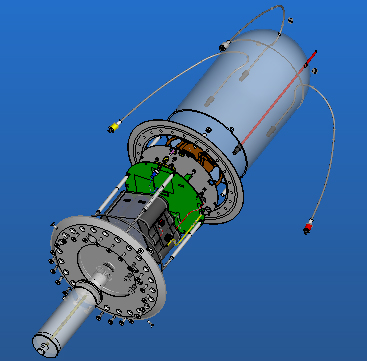
|
|

